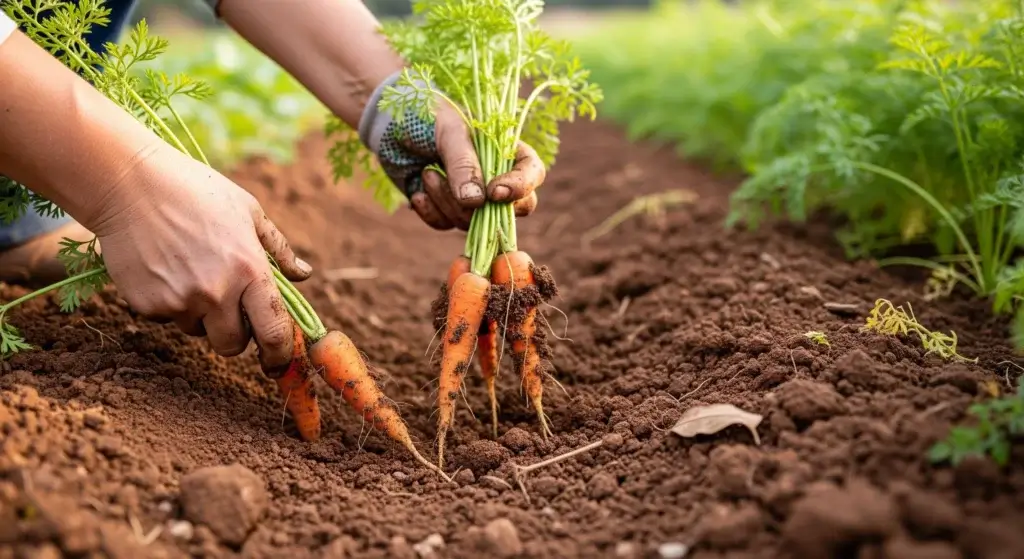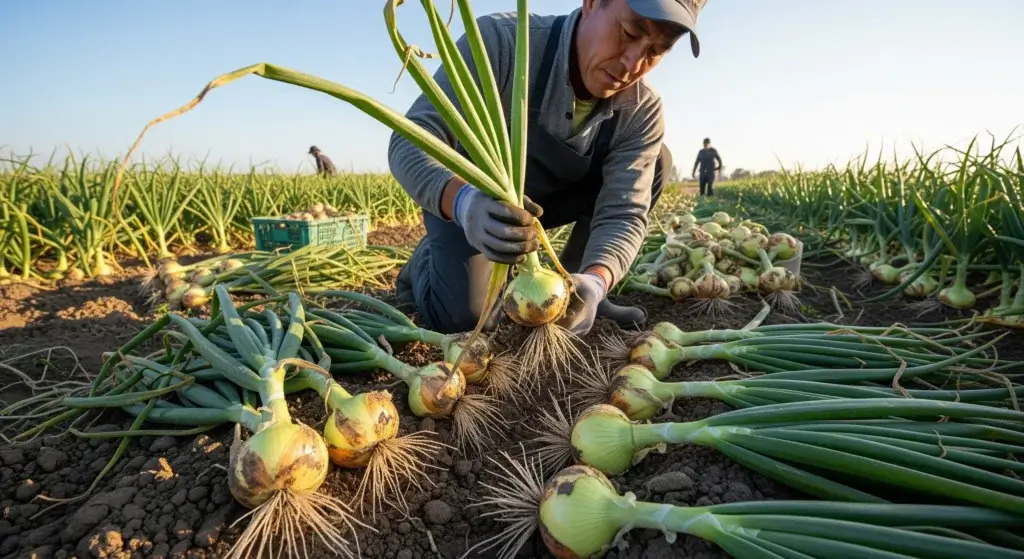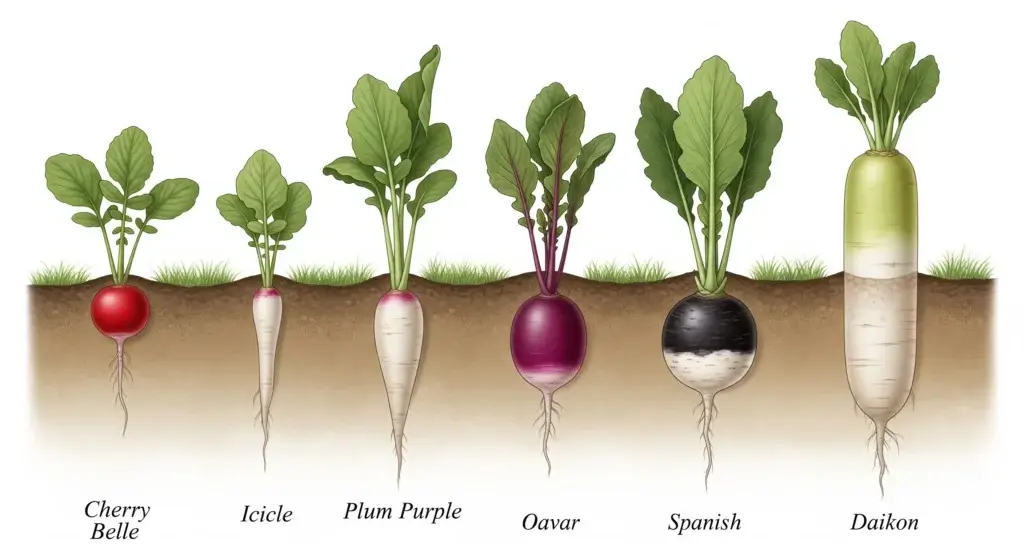
If your beets taste like sadness or never bulk up, it’s probably a soil issue.
Whether you’re new to veggie gardening or already knee-deep in compost, dialing in your beetroot soil game is everything.
This quick guide breaks down what your beets actually want—pH, drainage, organic matter, and a few magic tweaks—to turn your beds into beet heaven.
Let’s get that soil beet-ready.
Understanding Beetroot Soil Fundamentals
Beets may look low-maintenance, but when it comes to soil, they’ve got standards.
Sure, they’re tougher than some veggies, but they won’t thrive in just any patch of dirt—especially if the pH is off or the soil’s packed tighter than your inbox on a Monday.
Here’s the deal: since beets grow underground, the soil isn’t just where they live—it’s where they become.
You need it loose, airy, and just acidic enough for those roots to swell up sweet and round—not weird and woody.
So yeah, if you want tasty, tender beets that actually look like beets (and not shriveled stress balls), give the soil some love.
The roots will thank you—with flavor.
The Ideal pH Range for Beetroot
If you want your beets to grow big, sweet, and not taste like disappointment, you’ve got to check your soil pH.
Beets are picky like that. They love their soil in the 6.2 to 6.8 range—neutral to just slightly alkaline. Think chill, not sour or spicy.
Why it matters:
- Phosphorus (aka root fuel) is most available in that sweet spot.
- Your plants can actually absorb nutrients instead of struggling like a Wi-Fi signal in a basement.
- Microbes get to work, breaking down organic matter like pros.
- Bonus: healthy pH = stronger disease resistance. Your beets basically get a built-in immune boost.
If your soil’s too acidic (under 6.0), mix in agricultural lime—but do it a few weeks before planting so it has time to mellow out.
Too alkaline (above 7.5)? Add sulfur or compost to bring it back down to beet-happy levels.

Soil Texture and Drainage Requirements
Beets don’t like soggy feet or bone-dry living conditions.
They want soil that drains well but still holds onto enough moisture to keep things cozy underground. Think: sponge, not swamp.
Best soil types for beetroot
- Loamy soil – This is the dream. Perfect drainage, solid water-holding, tons of nutrients. It’s like the penthouse suite for beets.
- Sandy loam – Great if you get a lot of rain. It drains fast but dries out quick, so toss in some compost to help hold water and feed your plants.
- Clay loam – It can work, but it’s high-maintenance. If it’s heavy, roots might twist and turn like they’re dodging obstacles.
Improving soil drainage
Poor drainage is beetroot kryptonite. It leads to root rot, stunted growth, and sad, lumpy beets.
Here’s how to fix it:
- Build raised beds – 6–8 inches high = beet luxury apartments with great drainage. Plus, you control what goes in.
- Mix in organic matter – Compost, aged manure, leaf mold—whatever you’ve got. It opens up the soil and feeds your beets at the same time.
- Add perlite or coarse sand – Especially in heavy clay. These help break things up so your roots can breathe and stretch out.
Essential Organic Matter and Soil Amendments
If you want killer beets, forget fancy tricks—it all starts with organic matter.
It’s like the backstage crew that makes everything work: feeds the plants, fluffs the soil, keeps moisture just right, and supports those hard-working microbes doing the underground magic.
Compost
Compost is the MVP for beetroot soil. Seriously—if you only add one thing, make it this.
What it does:
- Feeds your beets slow and steady all season long
- Makes soil crumbly (in a good way), so roots grow easy
- Boosts microbial life—aka your soil’s immune system
- Keeps pH chill so nutrients stay available
How to use it:
Throw down 2–4 inches of compost, mix it into the top 6–8 inches of soil, and boom—your beets are living their best life.
Aged manure considerations
Manure can be awesome—but only when it’s been aged like a fine cheese.
- Never use fresh manure. It can burn your plants and make your beets bolt or grow weird, forked roots.
- If you’ve got aged stuff, mix it in during fall, then plant your beets in spring. Gives everything time to mellow out.
Additional beneficial amendments
- Bone meal – Loads of phosphorus = strong roots. Use about 1–2 lbs per 100 sq ft.
- Blood meal – Brings nitrogen for leafy growth, but go easy. Too much and your beets will skip root day.
- Kelp meal – A little sea magic. Packed with trace minerals and growth boosters. Great for stressed-out or sluggish plants.

Soil Depth and Preparation
Beets aren’t surface-level plants.
Their roots need depth to bulk up properly, and if the soil’s shallow or packed tight, you’ll end up with tiny, twisted beets that look like veggie stress balls.
Most varieties need at least 12 inches of loose, fluffy soil to stretch out.
Soil preparation steps
- Clear the junk – Rip out weeds, sticks, rocks—anything that could block your roots from going full underground superstar.
- Dig deep – Till or loosen the soil 12–15 inches down. Break up any hard layers—roots hate running into walls.
- Mix in the good stuff – While it’s loose, add your compost, aged manure, or other amendments. Think of it like seasoning a dish before you cook it.
- Smooth it out – Level the surface so seeds don’t roll or pool when you water. Beets like an even playing field.
- Test one more time – Quick soil test before planting = peace of mind. You’ll know your pH and nutrients are on point before seeds hit the ground.
Container Growing Considerations
Got bad soil or zero ground space? No worries—beets are totally cool with growing in containers.
But here’s the thing: in a pot, you’re in charge of everything, especially the soil. Mess that up, and your beets won’t even try.
Container soil mix recipe
Whip up this mix and your container beets will be living the good life:
- 40% quality potting soil – This is your base. Sterile, well-draining, and drama-free.
- 30% compost – Feeds your beets and keeps the mix alive with nutrients.
- 20% perlite or coarse sand – Keeps things airy so roots don’t suffocate.
- 10% aged manure or worm castings – Adds bonus nutrients. Beets love worm poop. It’s just facts.
Mix it all up in a big tub or wheelbarrow before filling your container. It’s like baking but for root veggies.
Container depth requirements
Go for at least 12 inches deep—deeper is better if you can. Beets need space to stretch those roots.
Growing baby or compact varieties? You might get away with 8–10 inches, but why risk it? Go deep. Let them thrive.
Seasonal Soil Management
Want consistent beet harvests year after year? You’ve gotta treat your soil right all season long—not just when it’s planting time.
Think of it like year-round skincare… but for dirt.
Spring soil preparation
Beets only sprout when the soil hits 45–50°F (7–10°C)—so don’t toss seeds in frozen mud and expect miracles.
- Test the temp with a soil thermometer (cheap and useful).
- Check the moisture—if the soil sticks together like wet cake batter when you squeeze it, wait. If it crumbles, you’re good to go.
- Prep your bed, mix in compost, and let those baby beets roll.
Summer maintenance
Mid-season, it’s all about moisture and mulch. Beets hate drying out, especially when they’re bulking up.
- Water regularly—deep, not shallow.
- Lay down mulch (like straw or grass clippings) to lock in moisture and keep the soil cooler than your iced coffee.
- Bonus: that mulch slowly breaks down and feeds your soil. Win-win.
Fall soil improvement
Once the beets are out, it’s soil rehab time.
- Add compost or aged manure to rebuild nutrients.
- Need to raise the pH? Fall’s the perfect time to add lime—it takes a while to kick in.
- Toss in a cover crop (like clover or rye) to protect your soil and add green goodness over winter.

Common Soil Problems and Solutions
Even if you prep like a pro, soil can still throw curveballs.
Here’s how to spot the usual beetroot drama and fix it before things get weird underground.
Compacted soil
Roots can’t grow if the soil’s packed tighter than your jeans after Thanksgiving.
Fix it:
- Loosen things up with deep tilling
- Mix in compost to fluff it out
- Use raised beds for long-term breathing room
- Oh—and stop walking on wet soil. That’s a fast track to compaction city.
Poor drainage
If your soil stays soggy, roots rot, seeds sulk, and everything turns to mush.
Fix it:
Add organic matter to improve structure
Build raised beds if puddles are a problem
For major issues, install drainage tiles—basically plumbing for your garden
Nutrient deficiencies
Yellow leaves, sad roots, no growth—your beets are starving.
Fix it:
- Run a quick soil test so you’re not guessing
- Use a balanced organic fertilizer—it covers most bases and won’t fry your plants
- Compost also helps if you’re not into numbers
pH imbalances
Even if your soil has nutrients, your plants can’t use them if the pH is way off.
Fix it:
- If it’s too acidic, add lime (slow and steady)
- If it’s too alkaline, go with sulfur or more compost
- Always test before tweaking—it’s like seasoning a dish: better to go light and adjust
Final Word: Beets Start with the Dirt
If you want sweet, juicy beets, it all comes down to the soil.
Keep your pH between 6.2–6.8, make sure the soil drains and holds moisture, and load it up with compost and organic matter. That’s the magic mix.
Soil care isn’t one-and-done. Every season is a chance to level up—more compost, better structure, fewer sad roots.
Stick with it, and you’re not just growing better beets—you’re building a healthier, happier garden overall.
Start with the soil. The rest follows.



